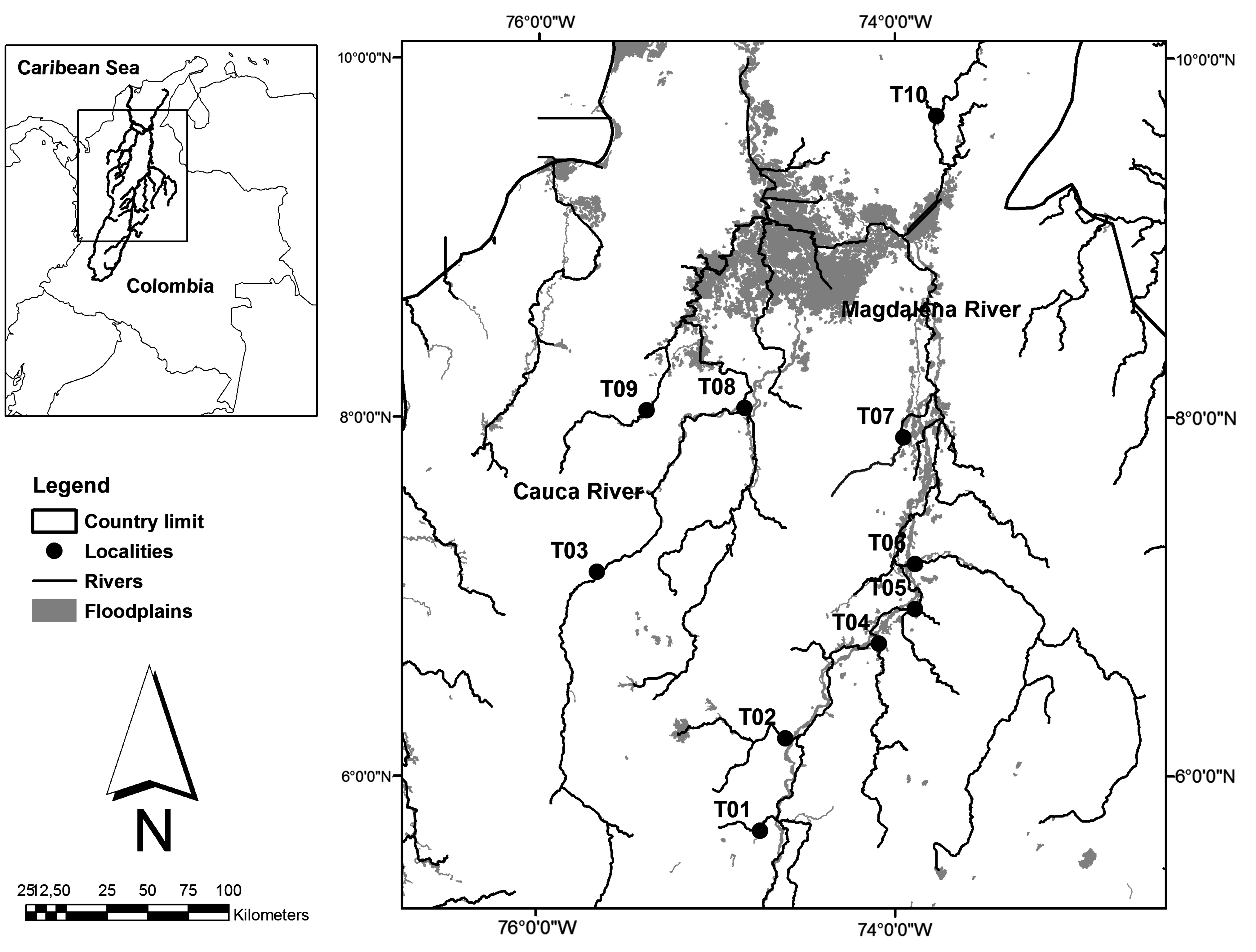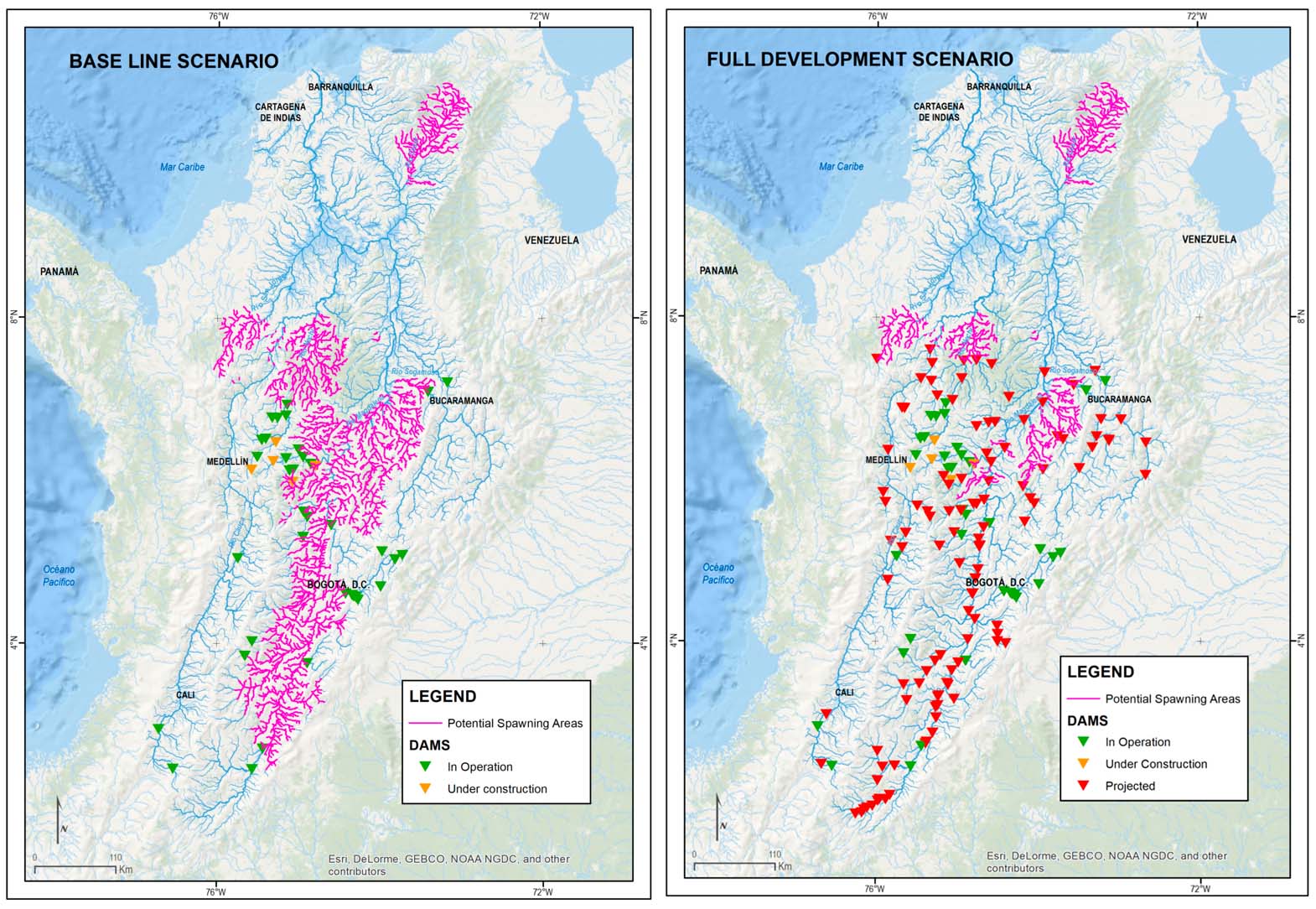Abstract
Because dams block migratory routes of potamodromous fish to their spawning areas, and energy generation changes natural flow seasonality, it is necessary to identify spawning areas and their conditions. This information will help in management decisions in the Magdalena River basin regarding the future hydropower development. We identified which characteristics of the tributaries to the Magdalena River are important for determining potamodromous fish spawning grounds, and we estimated the percentage of future loss of spawning areas because of dam development. Ichthyoplankton density is directly related to the floodplain area, and inversely related with channel slope. Low channel slopes offer adult fish a longer distance for their upstream migration and a longer time for embryo development during their drift downstream from the spawning areas to nursery habitats (floodplain lakes). These features could increase the migration distance of the adults, the time for initial embryo development, and, because of its relationship with nursery habitats access, the offspring survival. The potential loss of the actual spawning grounds in the river network was estimated to be nearly 70% because of new dams. Our findings will help to reduce conflicts between hydropower and ecological interests.
Keywords:
Basin geomorphology; Conservation; Freshwater fish; Magdalena River; Reproductive migrations

 Thumbnail
Thumbnail
 Thumbnail
Thumbnail
 Thumbnail
Thumbnail
 Thumbnail
Thumbnail



